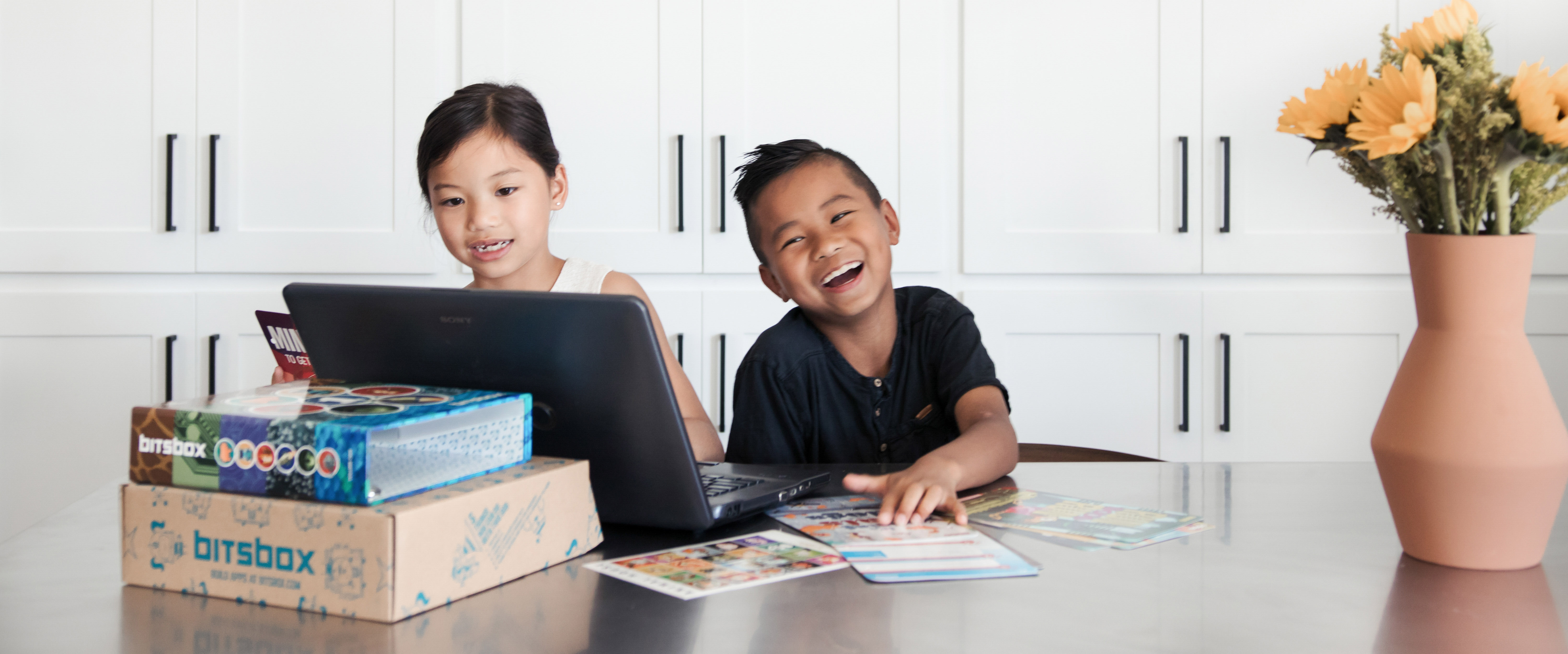Screens, screens, screens.
We stress over these questions and struggle with whether we're answering them correctly.
Yes, there is absolutely screen time that is detrimental to growth and development. But not all screen time is created equal, and finding the balance with screens is possible. Screen time isn't something you should be afraid of. Here's why:
Not all screen time is created equal
The average American adult spends 5 hours per day on mobile devices. Our phones have become a necessity more than a luxury, and I'll bet if your phone isn't in your hand right now, it's still within an arm's length.
But mobile usage isn't always a bad thing. These devices enable us to learn new languages, connect with friends and family around the world, and ease the stress of everyday chores like ordering groceries.
Sara DeWitt is the Vice President at PBS KIDS and takes a somewhat controversial stand on kids and screens. In her 2017 TED Talk she argues that kids need more screen time. But she makes a clear distinction between good and bad screen time and uses 3 commons myths to illustrate her point.
Myth #1: Screen time is passive.
The disturbing vision of a kid zoned out on the computer slowly turning into a couch potato isn't that hard to imagine. As grownups, it's our jobs to prevent that from happening. But brains rotting on the couch is an extreme generalization of screen time!
Screen time is passive if kids are spending mindless hours watching TV or playing video games. But there are a lot of digital activities that get kids to move around. Take Wii Sports games, for example, where kids can engage with a variety of activities like swinging a virtual tennis racket or getting a perfect strike in virtual bowling!
DeWitt details a study where kids mimicked bats flying on the screen by moving their own arms up and down. When they turned off the screen, kids continued to “fly” around like bats excitedly. The physical connection also triggered their memory when they left the room—they recalled that bats fly differently than birds, and that they sleep upside down.
This example shows that screens can be vehicles for interactive play, and actually enhance the children's learning. The virtual interaction with the bats engaged the kids in a way that made them excited to learn.
Myth #2: Playing games on screens is a waste of time. It's going to distract kids from their education.
Another fear we have about screen time is that it's going to take away from more enriching activities. DeWitt argues that, in fact, screens can be valuable tools to better understand how children learn, what they can improve on, and serve as uniquely effective educational programs.
At PBS, DeWitt's team created a Curious George math game and had 80 preschoolers play it. They then gave each of the children a math quiz based on the concepts exercised in the game. Early results showed a promising correlation between playing the game and scoring well on the quiz, but PBS's partners at UCLA wanted more data to support the conclusion.
To dig deeper, the UCLA researchers analyzed back-end data from the games as a means to predict a child's standardized math scores. The results were astonishing: The Curious George games, which weren't designed to serve as a standardized math assessment, provided results that accurately predicted how a child would score on the standardized test almost on the nose.
Turns out that if chosen carefully, digital games can prepare kids for standardized tests. That's hardly a detraction from their education.
Myth #3: These screens are isolating me from my child.
It's terrifying to think of losing that special bond with your kids because they're spending more time on their computer than they are with you. But you can use their love of screens to encourage interaction! Screens are valuable tools that we can use to interact with our kids.
Many digital games are meant for two players, so parents can easily jump in with their kids! In Geek Mom's post Just Say No To Screen-Free Week, she talks about the quality time that her daughter and husband spend playing online games together. Screen time can be collaborative and valuable bonding time!
Scary Mommy expresses a similar opinion in her post Screen Time Isn't All Bad. She's found that watching movies as a family has taught her kids emotional intelligence. Disney characters exhibit pretty complex emotions, and it's important to expose kids to examples of others working through those feelings. Children learn to empathize, listen, and problem solve. Talking about the characters' feelings is a convenient and easily accessible way to connect with your kids and work through their own complex emotions.
Screens are an important part of everyday life
The bottom line is that kids are growing up in the same world we live in—where we're on our own phones an average of 5 hours per day. How are kids going to learn to use technology appropriately as adults if we don't actively teach them while they're young?
There are legitimate reasons for us to be concerned about the screen time our kids consume. Not all screen time is good, and the amount of time your children are allowed is based on your own family's needs and your kids' interests.
By picking the right kind of screen time, your kids can use screens actively, learn from them, and strengthen their relationship with you in the process.
Check out 8 tips for keeping your kids safe online to learn about how your kids can safely use technology!


